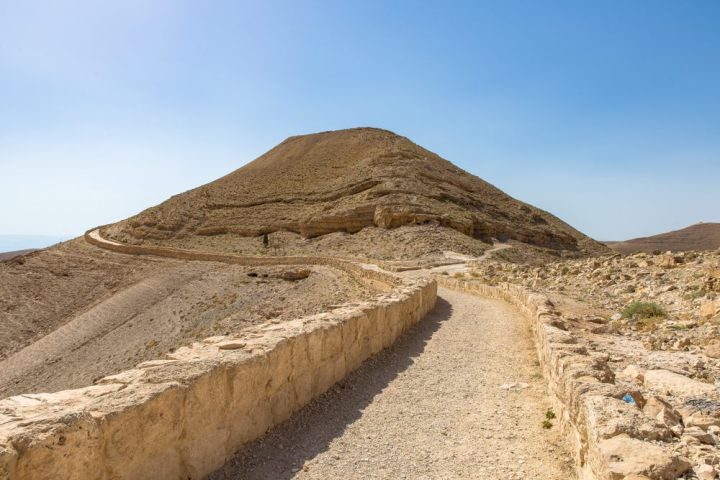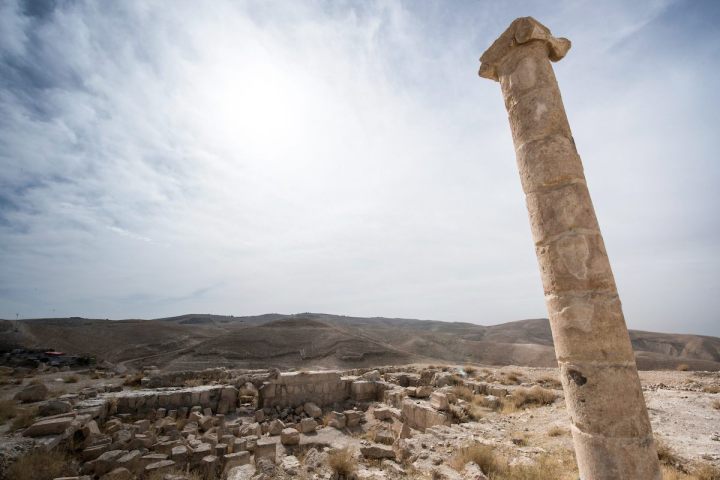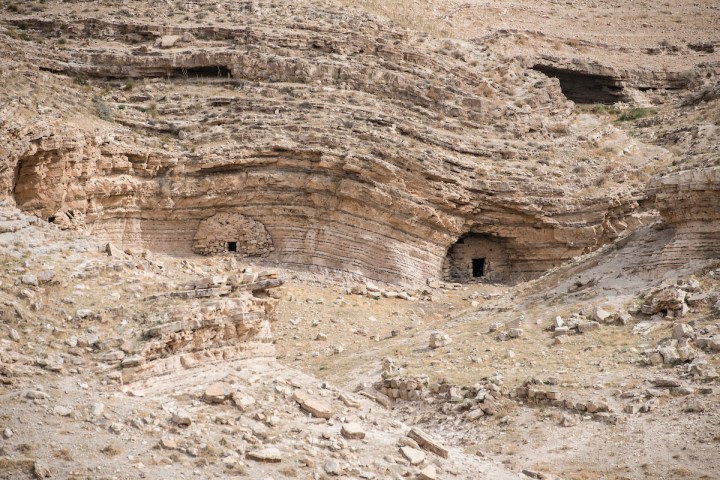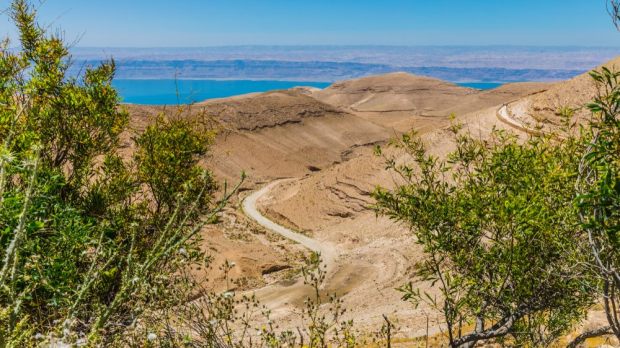The Jordan Trail is a 700-km-long hiking trail traversing Jordan from north to south. It is a Holy Land-based, long-distance hiking and pilgrimage camino brimming with biblical references and adventure. It is divided in eight regions that can be covered in around 40 days.
While traveling the second region, which goes from Aljoun to As-Salt, one finds the remains of the ancient fortified palace of Mkawir, on the eastern side of the Dead Sea about 16 miles southeast of the mouth of the Jordan River, and not too far away from Al-Maghtas, the place officially known as Bethany Beyond the Jordan, Jesus’ Baptism site, the area in which John the Baptist preached and ministered.

The relationship of Mkawir (Maxairous, in Greek; Machaerus, in Latin) with Jesus’ baptism site might not be evident for those who do not know the place. Bethany Beyond the Jordan has since, at the very least, the Byzantine periodbeen venerated as the original location where John the Baptist baptized Jesus.
Testimonies like those of Theodosius the Cenobiarch (an early monk, abbot, and saint) back what the Latin Patriarchate and UNESCO have unanimously claimed: that Bethany Beyond the Jordan is the place where John the Baptist baptized Jesus Christ. Theodosius’ text reads:
5 miles north of the Dead Sea in the place where the Lord was baptized there is a single pillar and on the pillar an iron cross has been fastened, there too is the church of Saint John the Baptist, which the Emperor Anastasius built.
The pillar has not yet been discovered, but all archaeological and architectural remains found in Al-Maghtas match Theodosius’ description. Moreover, the Gospel of John explains the Baptist’s ministry took place “at the other side of the Jordan” – that is, in Bethany beyond the Jordan. The text reads:
“I baptize with water,” John replied, “but among you stands one you do not know. He is the one who comes after me, the straps of whose sandals I am not worthy to untie.” This all happened at Bethany on the other side of the Jordan, where John was baptizing.
John 1:26-28
But if Al-Maghtas is the area in which John the Baptist, Jesus’ cousin, lived and ministered, Mkawir is the place where he was beheaded.
Only a few marble columns and stone walls remain from what once was Herod Antipas’ palace, but from the hilltop one can see the many small caves that hermits, anchorites, and monks carved into the sandstone to live a life of prayer in the vicinity of the place where, according to the 1st-century historian Flavius Josephus, John the Baptist was beheaded.

Today these caves are used by shepherds who seek refuge from both the heat (during the day) and the cold (during long, starry nights) of the southern Jordanian desert. Perfect silence is here only interrupted by an occasional goat bell. Some say that the Baptist himself might have been held prisoner in one of these caves.
According to the gospels of Mark (6:24) and Matthew (14:8), the beheading of John the Baptist took place in 32 AD, after John had spent at least two years imprisoned in this fortress.
Last year, a team of archaeologists working at Mkawir might have uncovered the dance floor where Salome performed her infamous dance. If correct, the site would also be the location where John the Baptist was not only beheaded, but sentenced to death.

Biblical narratives explain that King Herod Antipas was to marry Herodias, but the two had been previously married to other people. John the Baptist fell into the king’s displeasure after he publicly criticized their nuptials, condemning the union as sinful. While Herod was reluctant to execute John the Baptist, for fear of an uprising by those who viewed John as a prophet, he nevertheless imprisoned him.
However, he was soon manipulated to execute the prisoner by Herodias, through her daughter, Salome. As the Gospels tell, Salome danced so well for the king that he promised her anything she would ask. At her mother’s suggestion, Salome asked for John the Baptist’s head on a platter. And the request was granted.
A pavilion discovered at Machaerus is likely the spot where Salome danced. The director of the excavation, Győző Vörös, who is also the Project Director of the Jordanian Department of Antiquities, noted that the dance floor, initially discovered in 1980, features a small niche to the side. Vörös claims that this niche would have at one point accommodated a throne. Herod would have been in the seat, as he watched Salome dance.
To learn more about these biblical sites in Jordan, and the different pilgrimage sites and itineraries the country offers, visit the Holy Jordan dedicated site. For specific travel deals, promotions, and pilgrimage packages available, visit the Holy Jordan Travel Deals site.
This content has been brought to you in partnership with the Jordan Tourism Board.


